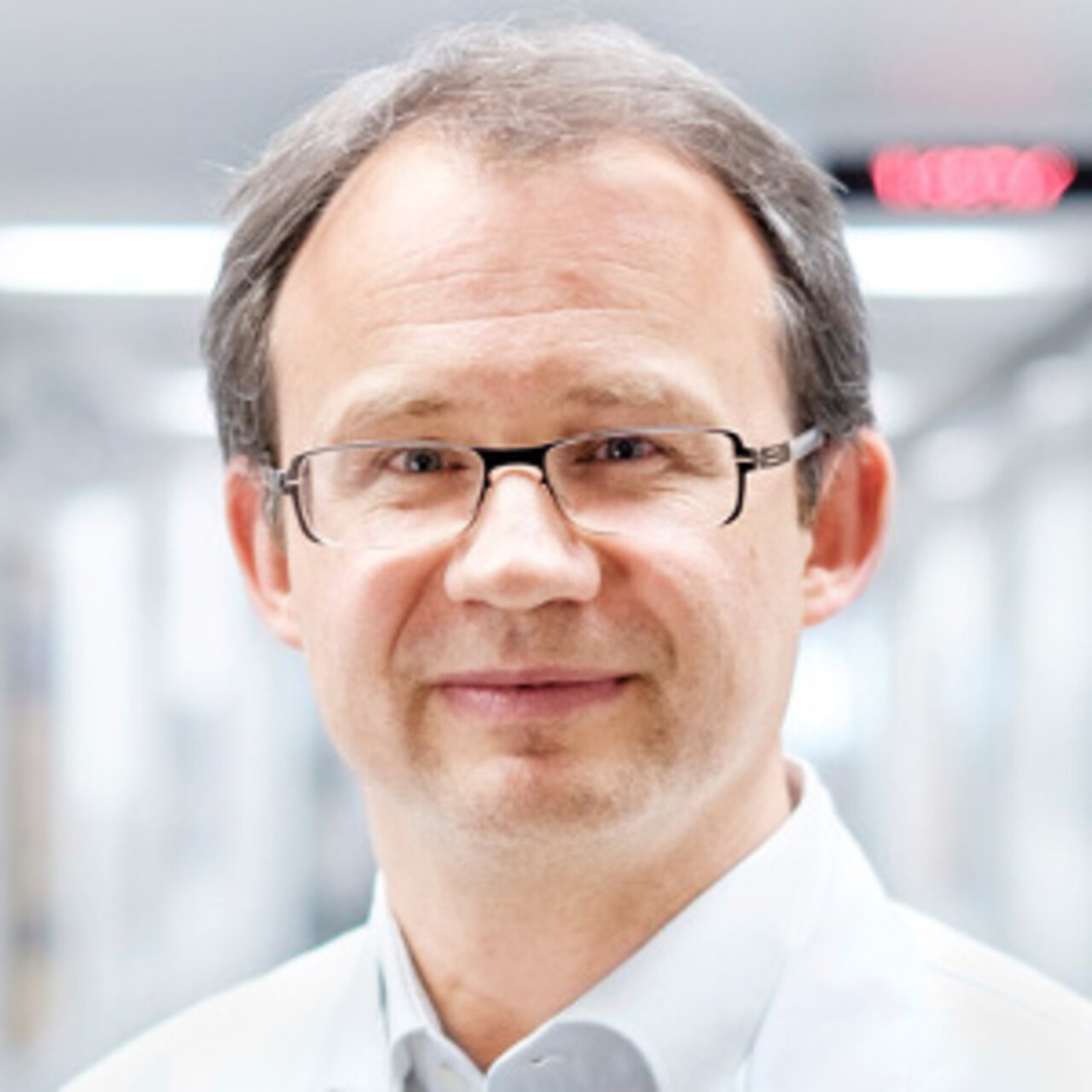Specialists in Tumours in Childhood
6 Specialists found
Information About the Field of Tumours in Childhood
Common Cancers in Children and Adolescents
Cancers in children and adolescents are rare, but they represent a great challenge and specialty in many respects.
The range of possible malignancies is broad, and different age groups, from newborn babies to adolescents, are affected with varying frequency.
In Germany, about 2000 children are newly diagnosed with cancer every year. Although the chances of cure are often good, malignant diseases are the most common cause of disease-related death in the age group.
Some malignancies occur only in children, such as Wilms tumor or retinoblastoma. In many cases, treatment is precise and different from that in adults, another unique feature of this medical field.
The most common cancers in children and adolescents are leukemias, i.e., white blood cancers (about one-third of all cancers). This is followed by tumors of the nervous system, especially brain tumors (about 20%).
In third place among the most common malignant diseases in young children and adolescents are lymphomas, i.e., cancers of the lymph nodes and lymphatic system (about 10%).
Other more common cancers are neuroblastomas, soft tissue tumors, renal cancer, bone cancer, and germ cell tumors. Other diagnoses are less common.
Brain Tumors in Childhood
The central nervous system tumors are the most common solid (solid, localized) tumors in childhood. They can occur in the brain or the spinal cord.
Tumors in the skull or the spinal canal can be benign or malignant (WHO grading). The necessary therapy and prognosis depend on this categorization and the presence of any metastases.
Treatment options generally include surgery, chemotherapy, and radiation therapy. The indicated kind of treatment can be very individual, but for some tumor groups, there are also fixed therapy plans that have proven successful.
More than half of the brain tumors in children and adolescents are gliomas, tumors that do not originate from the actual nerve cells but from supporting cells of the nervous system. Within this group, there are different grades. Benign and malignant forms with poor prognosis occur.
About a quarter of brain tumors are medulloblastomas/ PNETs (primitive neuroectodermal tumors). These tumors are usually aggressive and often need to be treated by a combination of surgery, radiation, and chemotherapy.
In addition, ependymomas occur in children and adolescents, originating from the cells lining the cerebrospinal fluid spaces from the inside.
Tumors of the pituitary region (pituitary gland), for example, craniopharyngiomas or germ cell tumors, are also relevant in this age group; disturbances of the hormone balance often accompany them. Visual disturbances are also possible here due to the local proximity to the optic nerve.
Other brain tumors, such as plexus tumors, also occur in young patients, but they are much rarer.
Very different symptoms can accompany the tumors of the central nervous system. Still, it is typical that the complaints, especially in malignant forms, often exist only a few days or weeks before it comes to the examination and diagnosis. Patients suffer, for example, from concentration disorders and a decrease in performance, they may be noticeably altered in character, and loss of appetite, vomiting, and fatigue are also typical.
Headaches can but do not necessarily have to be a symptom. Depending on the tumor's location in the brain, specific symptoms may be added, such as loss of balance and memory; seizures and movement disorders are also possible.
What Are the Signs of Tumor Disease in Childhood?
Symptoms of a tumor disease depend on the type of disease and the localization.
Reduced performance, weakness, fatigue, exhaustion, or concentration disorders can be signs of malignant disease.
In addition, there are complaints caused by particular cancer. For example, some tumor diseases have very typical, rapid-onset symptom combinations and can be detected quickly, while others are more asymptomatic and progress slowly unnoticed.
Typical symptoms of malignant diseases, even in children, are fever without any other identifiable cause, night sweats, and unwanted weight loss (so-called B-symptoms).
The following is an overview of some of the symptoms of the more common tumors and cancers in young patients.
Leukemias, the most common malignant disease in childhood and adolescence, usually cause general weakness and reduced performance. The children are often very pale. In addition, there are frequent febrile infections and an increasing tendency to bleed, which can be manifested by nose or gum bleeding or conspicuous bruises.
In addition to the B symptoms described above, lymphomas are accompanied by significant swelling of the lymph nodes, usually not painful.
Typical signs of a brain tumor in childhood have already been mentioned above.
Neuroblastomas often remain unnoticed for a more extended period, and the patients have few complaints.
Symptoms develop only as the tumor grows, depending on the location. For example, palpable swelling of the affected region, shortness of breath, paralysis, urinary retention, or hormonal disturbances may occur.
Soft tissue tumors are often conspicuous by swelling and palpable changes in the tissue; depending on the location, functional disorders of the affected body region may also occur.
Bone tumors, such as osteosarcoma, are typically accompanied by persistent pain leading to limited mobility.
Renal tumors such as Wilms' tumor, which occurs in childhood, initially remain asymptomatic; patients are often first noticed by an increasing abdominal circumference, and a large tumor may be palpable. Other symptoms, such as bloody urine, usually appear late.
How Can Tumors Be Detected in Children?
Changes such as swellings are often first noticed by the children themselves, parents, or other caregivers. Therefore, attentive observation of changes in behavior, movement patterns, and the body is significant. Complaints even from the youngest children should be taken seriously; recurrent pain or, for example, an increasing posture of rest should be clarified. A doctor should also discuss changes in character, persistent fatigue, reduced performance, unwanted weight loss, and fever or vomiting without infectious cause.
A physical examination is particularly important; this is usually done first by a general practitioner or pediatrician. The affected body regions can be palpated, function and mobility are checked, and the patients and their parents can describe any abnormalities in detail.
In children, it is particularly important to use non-invasive and low-radiation examination methods to make the procedure as pleasant and low-risk as possible.
Therefore, an ultrasound examination is an obvious choice, as it can be used to visualize the various organs and tissue changes and examine the blood flow in more detail.
Often, a blood test is also necessary, for example, to draw up a blood count, exclude inflammation, or look for specific tumor markers.
Depending on the suspected tumor disease, imaging procedures are also indicated in children. To avoid X-rays as far as possible, an MRI can be performed, but this requires the child to lie still for a more extended period. The extent to which the child can cooperate depends very much on their age.
X-rays and CT scans should be used sparingly because of the radiation exposure, but they are still an excellent and quick way to diagnose many diseases more accurately.
It is often necessary to take a sample from the tumor for diagnosis and therapy planning. In children, the biopsy usually has to be performed under anesthesia. Special needle cannulas are used to puncture the altered tissue, and small areas are taken for microscopic examination. It is also possible to puncture, for example, the cerebrospinal fluid in the spinal canal (lumbar puncture) or to take samples from the bone.
Rare Tumors in Children
Rare tumors in children include tumors of the pancreas (pancreatic tumors), tumors of the pharynx and larynx, tumors of the salivary glands, or tumors of the nasopharynx (nasopharyngeal carcinomas).
Cancers that occur more frequently in adults as they age and are caused by certain factors, such as colorectal carcinoma or melanoma (skin cancer), are sporadic in children.
Which Doctors and Clinics Are Specialized in Treating Tumors in Children?
While children with the disease usually first present to a pediatrician, specialized pediatric oncologists often provide further treatment due to the unique nature of tumor diseases in the youngest patients.
Childhood and adolescent cancers are often treated in larger hospitals or centers with a high level of expertise. They can also ensure links to other specialties such as surgery or human genetics and adequate and individualized further care.
Every patient who needs a doctor wants the best medical care. Therefore, the patient is wondering where to find the best clinic. This question cannot be answered objectively, and a reliable doctor would never claim to be the best one, we can only rely on a doctor's experience.
We will help you find an expert for your condition. All listed doctors and clinics have been reviewed by us for their outstanding specialization in childhood tumors and are awaiting your inquiry or treatment request.
Sources:
- www.kinderkrebsstiftung.de/wp-content/uploads/2019/11/Boesartige_Tumoren.pdf
- www.gpoh.de/kinderkrebsinfo/content/erkrankungen/seltene_tumoren/index_ger.html
- www.kinderkrebsstiftung.de/krebs-bei-kindern/krankheitsbilder-behandlung/
- www.ccc.uk-erlangen.de/krebsarten/tumoren-im-kindes-und-jugendalter/
- www.kinderkrebsstiftung.de/wp-content/uploads/2021/06/DKKS-HIT_Broschuere-Ansicht.pdf





